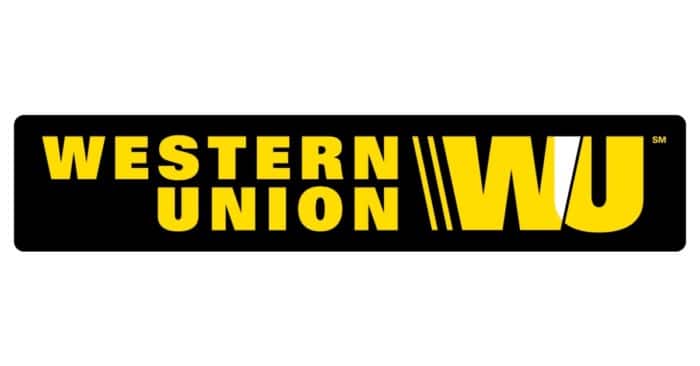
You may not realize it, but you could be losing money on exchange rates and transfer fees when sending money to Canada.
Most people opt for bank transfers because that’s been the norm for so long.
With online services like Wise, which regularly offer the best exchange rates and lowest transfer fees, banks aren’t necessarily the way to go anymore.
In this guide I’m going to break down the cheapest way to send money to Canada.
To find out which international transfer method is the cheapest, you can skip right to that section.
In the tables at the end of this guide, you’ll find three sample transfers of $1,000, $10,000, and $100,000 to see how things change as your transfer increases.
For a detailed breakdown of each service, keep reading.
This article will take approximately 16 minutes to read. Don't have the time right now? No worries. You can email the ad-free version of the article to yourself and read it later!
Disclaimer: This article may include links to products or services offered by ExpatDen’s partners, which give us commissions when you click on them. Although this may influence how they appear in the text, we only recommend solutions that we would use in your situation. Read more in our Advertising Disclosure.
Contents
What to Watch Out For
When sending money to Canada from abroad, here are a few things to be aware of:
- Transfer fees
- Exchange rates
- Transfer speeds
Taxes
Transfer Fees
Transfer fees come in a number of different forms depending on what service you use to send money to Canada:
- Fixed amount fees
- Percentage fees
- Combination fees
Being aware of the different types of transfer fees and which one suits the amount you’re trying to transfer can save you a lot of money.

Otherwise it’s very possible to end up being on the wrong end of an exorbitant transfer fee for a relatively small transfer.
Fixed rate transfers make sense for transferring large amounts where the percentages might incur heavy costs.
Bank of America, for example, charges a $35 USD fee for international transfers in foreign currencies or a $45 USD fee for international transfers in US Dollars.
You can also pay transfer fees as a percentage of the money you transfer to Canada, like when you use a credit card to buy something in Canada.
You could also be charged a combination of percentage and flat fees together.
PayPal charges both a flat and percentage fee.
And if you send between $171.00 CAD to $1000.00 CAD, paying with your credit or debit card increases your fees but the bank fee stays at $4.99 USD.
Exchange Rates
This is where people have to be their most vigilant when they transfer money.
Banks and Western Union, for example, make most of their money through exchange rates rather than transfer fees when providing transfer services.
In fact, with a high enough exchange rate and a large enough transfer sum, you could unknowingly end up paying hundreds of dollars in fees.
Markups that might seem small at 2.5% or 3% of the mid-market exchange rate can add up when you send large transfers.
For example, if you transfer $5,000 USD from America to Canada, you can end up paying $150 USD in exchange rate fees.
The issue though is many banks and services aren’t always upfront about these exchange rate fees. Some of this info is buried in the fine print or labelled differently.
That’s why it’s important to find out what exchange rate you’re being offered and then compare it to the mid-market exchange rate on XE.com.
Usually, transfer services like Wise offer the best exchange rates.
Sometimes exchange rate fees are as low as 0.3% or 0.6% percent. So that $5,000 USD transfer could end up costing just $15 USD.
In fact, as long as the fees are low, you should be aiming for exchange rate markups that come close to 0.5%.
Transfer Speeds
Transfer speeds depend on which country you transfer money to Canada from and the service you use.
Some banks can transfer money on the same day but some may take up to a week.
For example, Chase Bank in America takes three to five business days to wire international transfers to Canada, whereas Wells Fargo takes one to three business days.
But if you transfer from a Wells Fargo in America to one in Canada, it could take less than 24 hours.
Even with online transfer services there’s variation based on where the money is coming from. Times can be as quick as a few hours to around three days.
Wise and WorldRemit send money from America to Canada in roughly one to three business days.
Western Union can do it in an instant as long as their locations are open, otherwise it can take one day.
Taxes
A major positive of transferring money to Canada is the lack of taxes levied by the country.
No matter how much cash you send or receive, there won’t be any gift or capital gains tax, nor will there be any legal documents to file in Canada.
You also don’t have to declare your transfer with the Canada Revenue Agency, no matter how much money you transfer.
But the country you’re sending money from might have their own tax laws.
For example, if you send more than $10,000 USD from America to Canada, you have to notify the IRS.
Sending Money Online
The easiest way to transfer money is to use an online service. They’re convenient, you save money, and you have many choices.
Wise and WorldRemit are your best choices if you want to send money to Canada online.
You’ll find small differences in exchange rates, transfer times, and transfer fees, but besides that the services are interchangeable.
Let’s take a look at Wise and WorldRemit individually and what they offer.
Wise

Wise automatically calculates your transfer fees, exchange rates, and transfer times when you enter your transfer amount.
Wise calculates fees based on the currency you use and vary around 0.5% of the transfer amount.
On top of those fees, there’s also the fee charged by the bank for the payment method you use, whether it’s debit card, credit card, or bank transfer.
Wise also converts at the currency’s mid-market rate, which it clearly displays when calculating the conversion. You get no hidden surprises.
The site even tells you how long the transfer should take—anywhere from a few hours to a few days depending on where you transfer from.
For an example, if you transfer $1,000 USD to Canada it’ll take around a day.
Wise charges $7.82 USD in fees if you use bank debit. This means you get $1,323.92 CAD.
WorldRemit

WorldRemit is similar to Wise.
WorldRemit charges $3.99 USD for transfers up to $2,000 USD. For transfers of $2,001 USD to $5,000 USD, you pay $0.01 USD for each dollar you transfer.
They also make some money off exchange rates. A transfer of $1,000 USD, plus the $3.99 USD in fees, to Canada gets you $1,286.72 CAD.
Their exchange rate of $1 USD to $1.28 CAD is a markup of a little over 2% compared to the XE mid-market rate of $1 USD – $1.31 CAD.
With a mid-market transfer of $1,000 USD giving you $1314.65 CAD, you lose $29.93 CAD in exchange rate fees.
They also take about one to three business days to complete a transfer.
Sending through International Banks
For most people, the first place they think of when transferring money anywhere is the bank.
But international bank transfers to Canada carry the risk of unexpected costs, higher fees, and sub-optimal exchange rates if you’re not careful.
On top of that, both the sending and receiving banks can tack on their own set of charges and fees.
Banks also have long processing times in comparison to online transfer service companies that could be anywhere from ten days to many weeks.
The good news is that you can send money to anyone in Canada from abroad through the banks as long as you open a bank account after moving here.
To do so, you needs to have their SWIFT code, bank branch code, transit code, account number, name, and address.
Sending Bank
Depending on which bank you choose and what country you’re transferring from, you’ll receive different quality services and see different payment structures.
Transfer fees are usually easy enough to find out but it’s the exchange rate fees that can be a little more difficult to figure out.
Without adequate info, you can end up paying more than you expect because of poor exchange rates.
For example, transferring $1,000 USD from Bank of America to a Canadian bank means a weaker exchange rate, which they only tell you once you transfer.
They also charge a $35 USD fee for international transfers in foreign currency or a $45 USD fee for international transfers in US Dollars.
That’s why you should always compare the mid-market exchange rate on XE.com to the rate the bank offers you and see how much more you might end up losing.
Receiving Bank
Just like sending banks, receiving banks in Canada have their own structures.
They charge their own fees and exchange rates on money sent to them in a foreign currency.
For example, Scotiabank charges a $15 CAD processing fee for receiving international transfers and flats fees charged by any intermediary banks.
But much of this info can be difficult to get, so you end up unknowingly paying hidden fees and exchange rate markups.
Deducting Fees from Sender or Receiver
You might have the option of choosing who pays the fees, the sender or receiver.
If you’re transferring to yourself, then you can choose the option that costs less money.
Regardless of what you choose, the sender may still get charged. But it might be lower.
Which Currency to Transfer
Hidden exchange rates are always a risk when you have the conversion done abroad.
Some banks can take anywhere from 1% to 3% and, though rarely, even as high as 8%.
They may also charge different fees based on what currency you send your money in.
Bank of America, for example, charges $35 USD for outbound international wires sent in foreign currency and $45 USD for outbound international wires sent in US Dollars.
One way to avoid higher exchange rates is to choose to wire money in the local currency of the receiving bank, so in this case Canadian Dollars. This way, fewer banks touch your money or slap on their own fees.
Sending through Other Methods
Forex companies can be more complicated to use when sending money to Canada and focus more on high-value transfers.
They offer poorer exchange rates and larger markups than most banks.
With forex companies, your country of origin is important.
If you come from Canada, USA, UK, or Scandinavian or EU countries, you can use a forex company.
But if you come from a country with laws that restricts access to transfer services, you may need to look elsewhere.
Here are a few forex companies you can start with.
Western Union

Western Union can transfer your money from anywhere in the world to Canada in a matter of minutes.
Scotiabank account holders can even use Western Union through the bank’s website or app.
Transfer fees range from a few dollars to hundreds of dollars based on whether you transfer in cash or from a bank, your payment method, and the transfer amount.
On top of that, exchange rates can differ from the mid-market rate by up to 7.5%.
If you send $1,000 USD to Canada you pay a $10 USD fee and get an exchange rate of $1 USD to $1.2455 CAD. In the end, you get $1,245.50 CAD.
It’s quick but expensive and only makes sense if you need money fast.
PayPal

You can also make international transfers through PayPal. But PayPal is still not as cheap as using cash or sending money online.
PayPal offers an exchange rate with a markup of as low as 1% to up to 4% depending on which PayPal service you use.
PayPal also has multiple fees and exchange rate structures based on how much you’re sending and what method you’re using to send your money to Canada.
If you send $50.00 USD or less, you get an exchange rate of $1 USD to $1.2671 CAD.
You also have to pay a $4.99 USD fee whether you use your bank account, debit card, or credit card, netting you a total of $63.35 CAD.
If you send $100 USD, you get a better exchange rate of $1 USD to $1.2801 CAD.
You also pay a $4.99 USD fee whether you use your bank account, debit card, or credit card, netting you a total of $128.00 CAD.
If you send over $171.00 CAD and pay with your credit card or debit card, fees increase but bank account fees stay at $4.99 USD.
The exchange rate is more favorable: $1 USD to $1.3009 CAD. But it’s still much weaker than the XE.com rate of $1 USD to $1.3287 CAD.
Finally, for transfers between $1,000 CAD and $50,000 CAD, you get a $1 USD to $1.3009 CAD exchange rate, but bank account fees are waived.
But debit and credit card fees become expensive, ranging from $30.49 USD to $997.49 USD.
If you use a credit or debit card, you can use your card issuer’s conversion rate instead of the PayPal rate, but the issuer’s rate is hard to find.
But you can save some money on the exchange rate by comparing which option is cheaper.
For transfers of less than $1,000 USD, PayPal is cheaper than banks but more expensive than online services.
Exchanging Cash in Canada
If you’re coming to Canada and need to bring money with you, bringing cash is still the easiest and cheapest choice depending on how much money you need.

If you bring $10,000 CAD or more you have to declare it at the border to an agent.
But if you have less than that you can simply bring the money into Canada.
Once you’re in Canada, you can convert your cash at a rate close to the online transfer services by going to a professional money exchange office.
For example, you can exchange money at Calforex Currency Exchange. They have branches in Victoria, Toronto, Montreal, Calgary, Edmonton, and more.
Calforex charges as little as $3.50 for currency exchanges.
And if you don’t use any of your Canadian Dollars, you can exchange it back into your home currency at the same exchange rate you bought it for.
Cheapest Way to Send Money
If you want to transfer $1,000 to Canada considering the services we went over in this guide, here’s what it comes down to:
| Transfer Method | Amount Sent (USD) | Transfer Fees | Exchange Rate (CAD) | Amount Received (CAD) |
| Cash | $1,000 | n/a | 1.32 (average) | $1,326 |
| Wise | $1,000 | $7.82 | 1.32 | $1,315 |
| Bank of America | $1,000 | $35 | 1.27 | $1,267 |
| Western Union | $1,000 | $7 | 1.24 | $1,250 |
| PayPal | $1,000 | $26 | 1.32 | $1,294 |
Exchanging $1,000 in cash in Canada gets you the most money. For exchanges over $1,000 you save more money using Wise.
If you want to send $10,000 to Canada, the next table shows a breakdown of the numbers.
You can see the more money you transfer, the more things change.
For a $10,000 transfer, Wise saves you the most money, unless you show up with $10,000 cash.
But do you really want to come to Canada with $10,000 cash?
At this level, we also lose the choice to transfer money through Western Union because they have a $5,000 transfer limit.
| Transfer Method | Amount Sent (USD) | Transfer Fees | Exchange Rate (CAD) | Amount Received (CAD) |
| Cash | $10,000 | n/a | 1.32 (average) | $13,264 |
| Wise | $10,000 | $51.47 | 1.33 | $13,250 |
| PayPal | $10,000 | $251 | 1.32 | $12,949 |
| Bank of America | $10,000 | $35 | 1.27 | $12,669 |
| Western Union | $10,000 | n/a | n/a | n/a |
And finally, a $100,000 transfer to Canada.
At this stage you lose the ability to transfer money through Western Union and PayPal.
And again, Wise beats their competitors—unless you show up with $100,000 cash, which is illegal.
| Transfer Method | Amount Sent (USD) | Transfer Fees | Exchange Rate (CAD) | Amount Received (CAD) |
| Wise | $100,000 | $454.65 | 1.33 | $132,744 |
| Cash | $100,000 | n/a | 1.32 (average) | $132,652 |
| Bank of America | $100,000 | $35 | 1.27 | $126,695 |
| Western Union | $100,000 | n/a | n/a | n/a |
| PayPal | $100,000 | n/a | n/a | n/a |
Now, on to You
If you want a transfer method that saves you the most money when sending $1,000 to Canada, come here with cash and exchange it at a currency exchange office.
If you’re already here and looking for a way to get money into the country, send money to Canada using Wise.
They regularly offer the best exchange rates, have the cheapest fees, and the quickest transfer times.








Geat article thanks a mil!